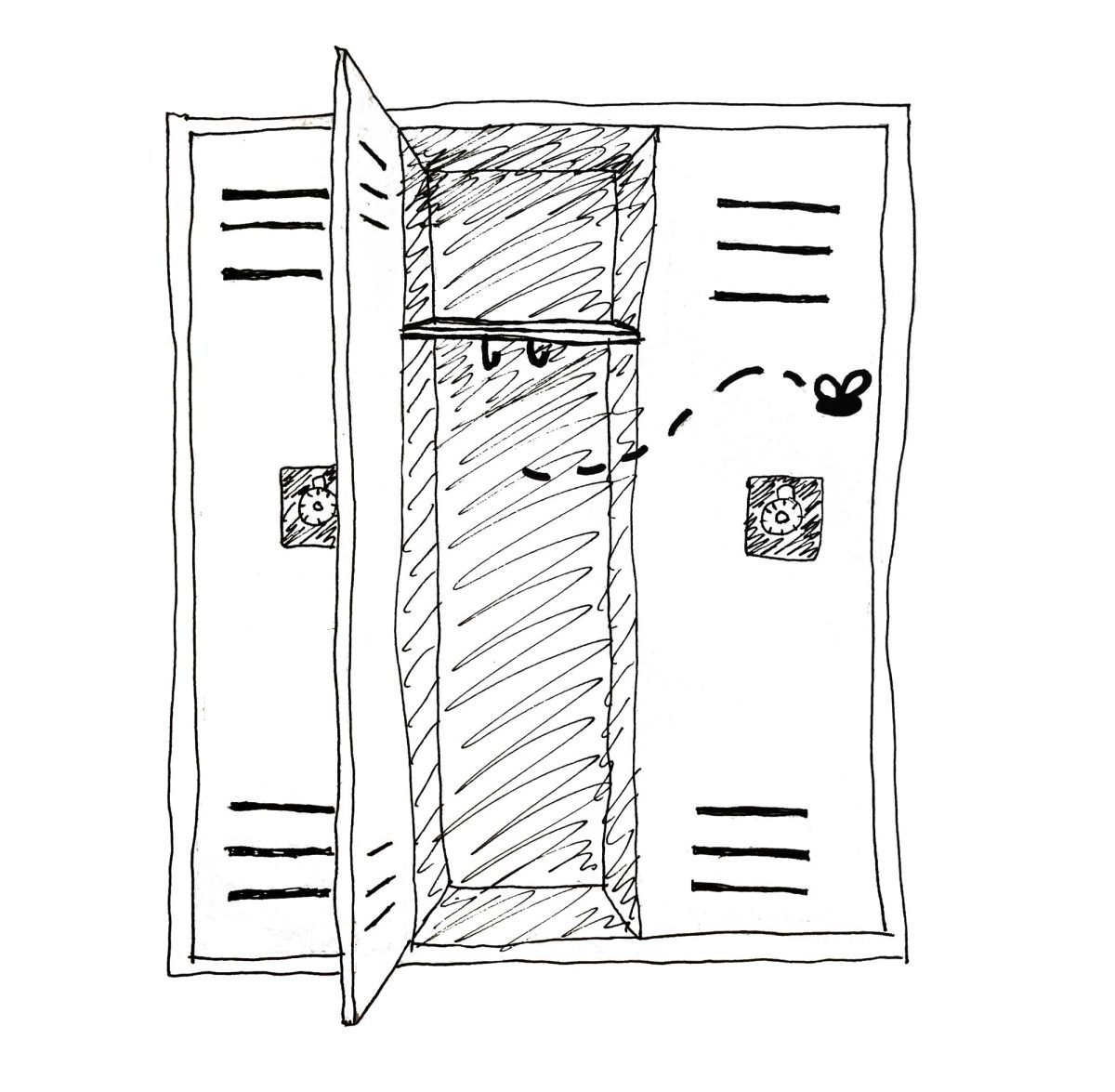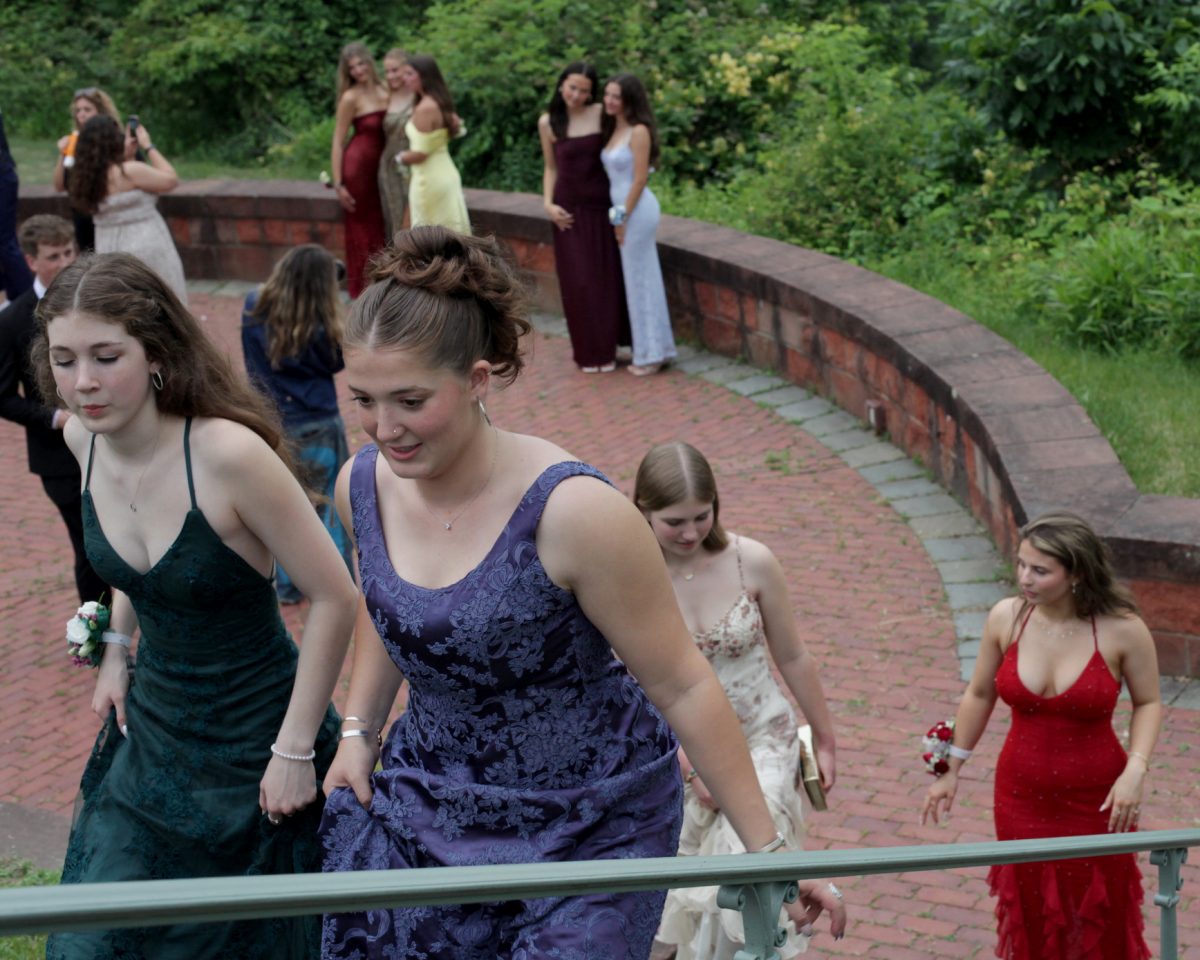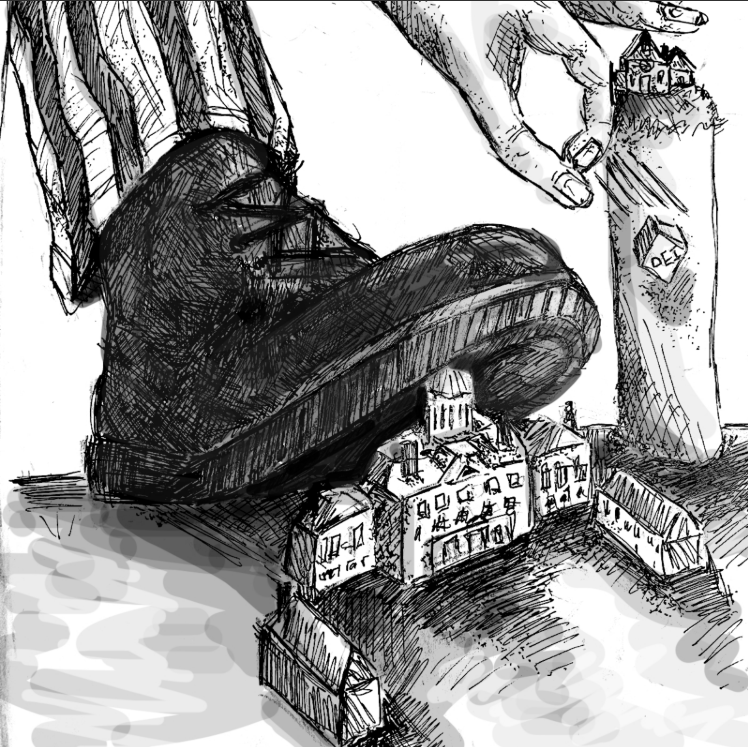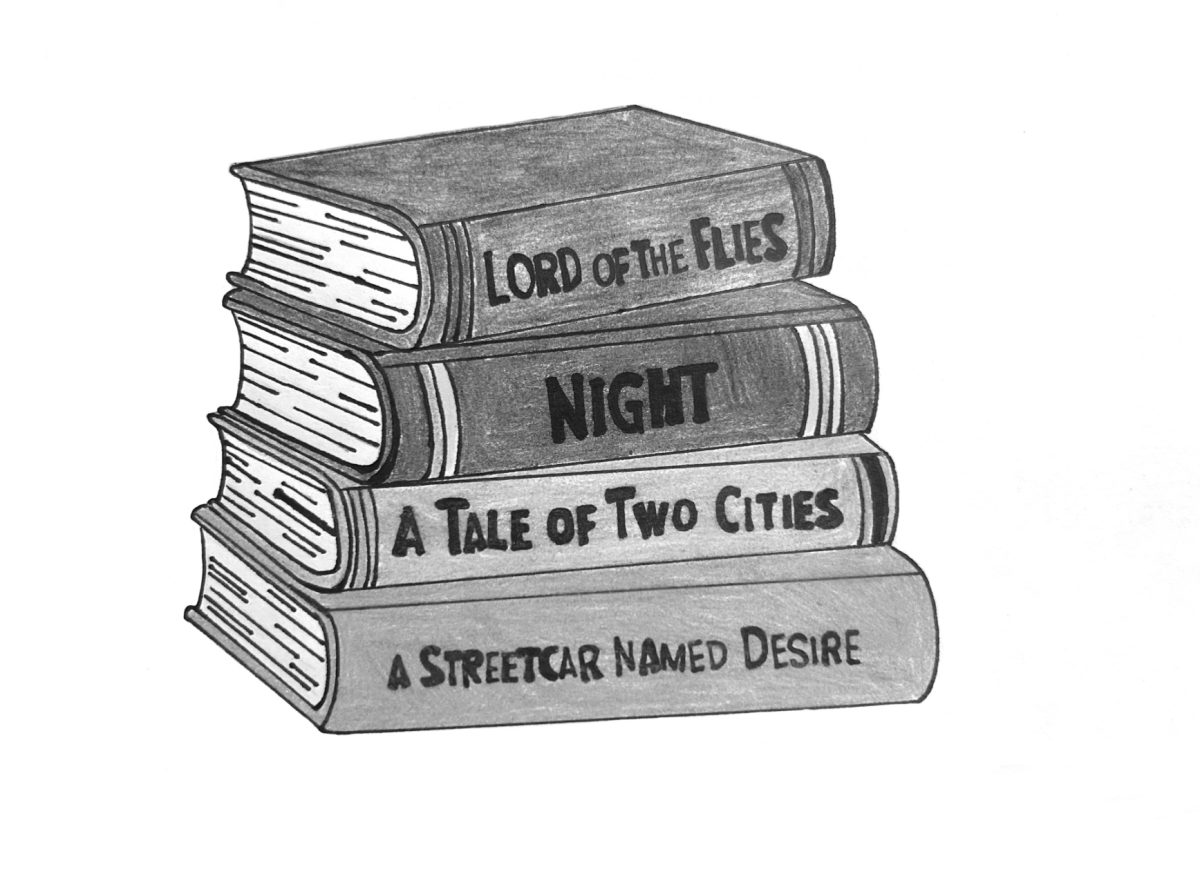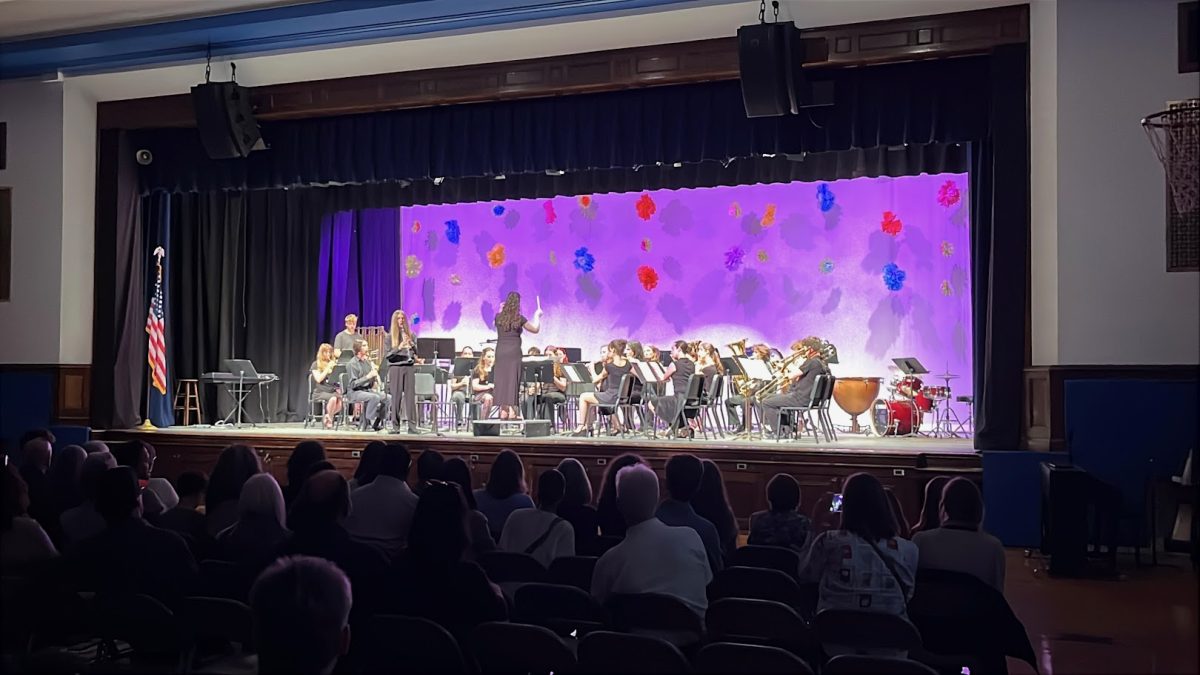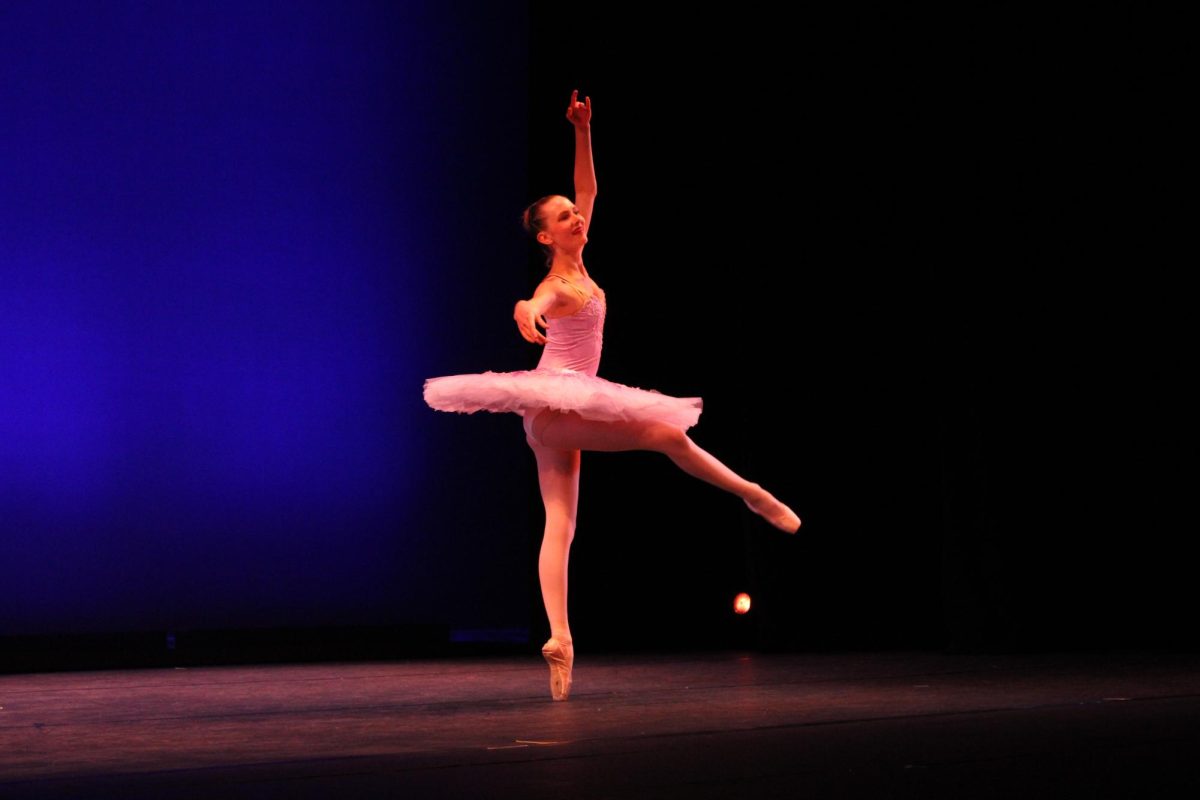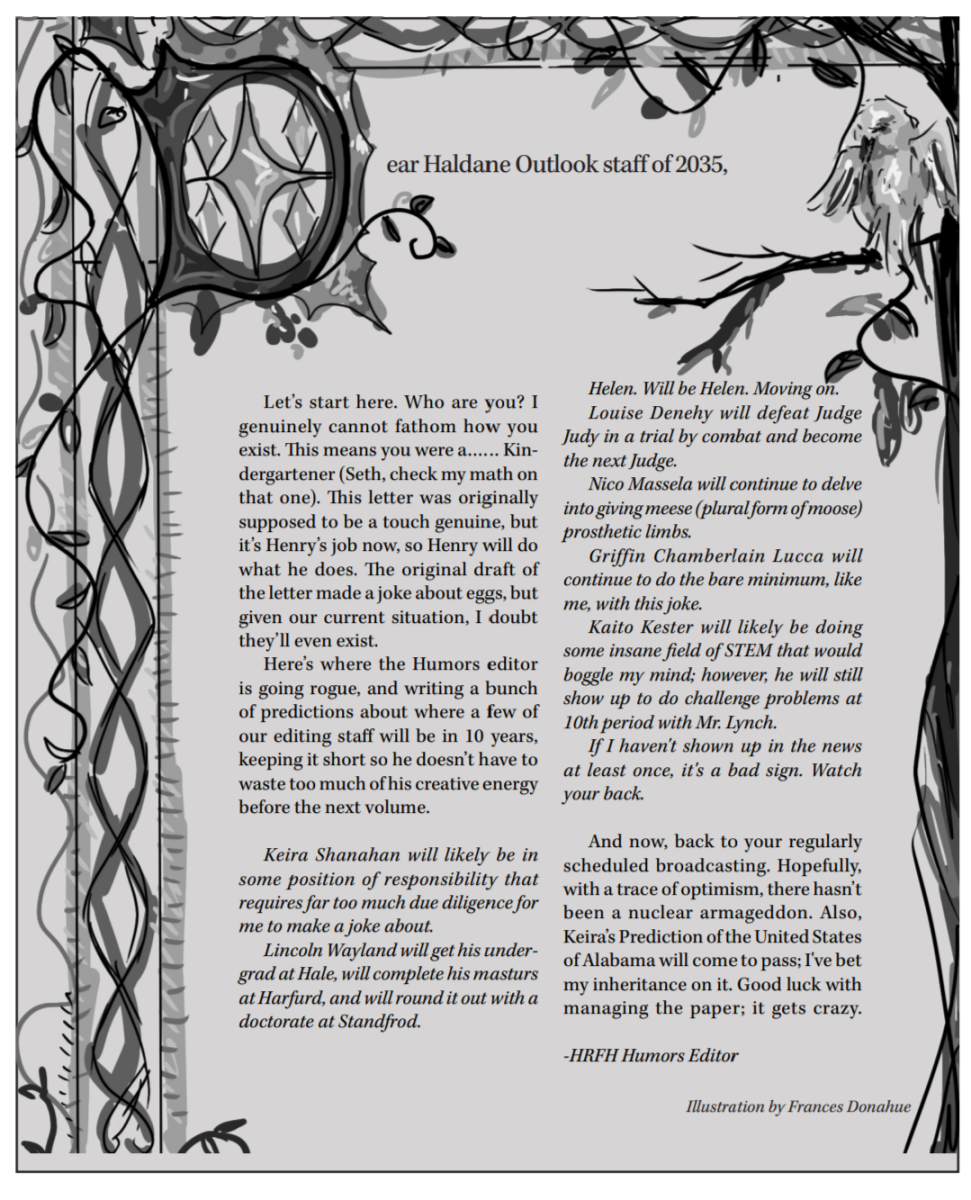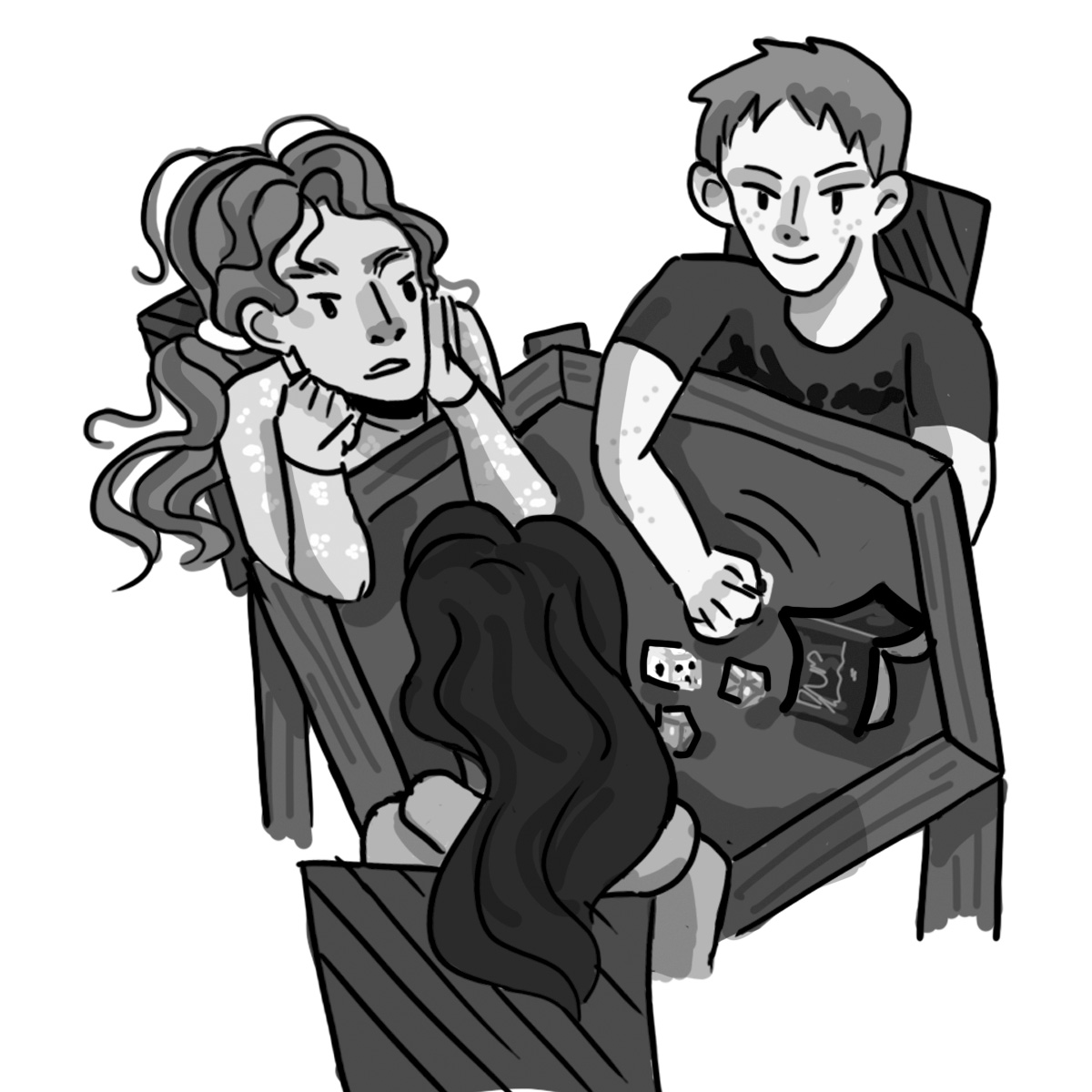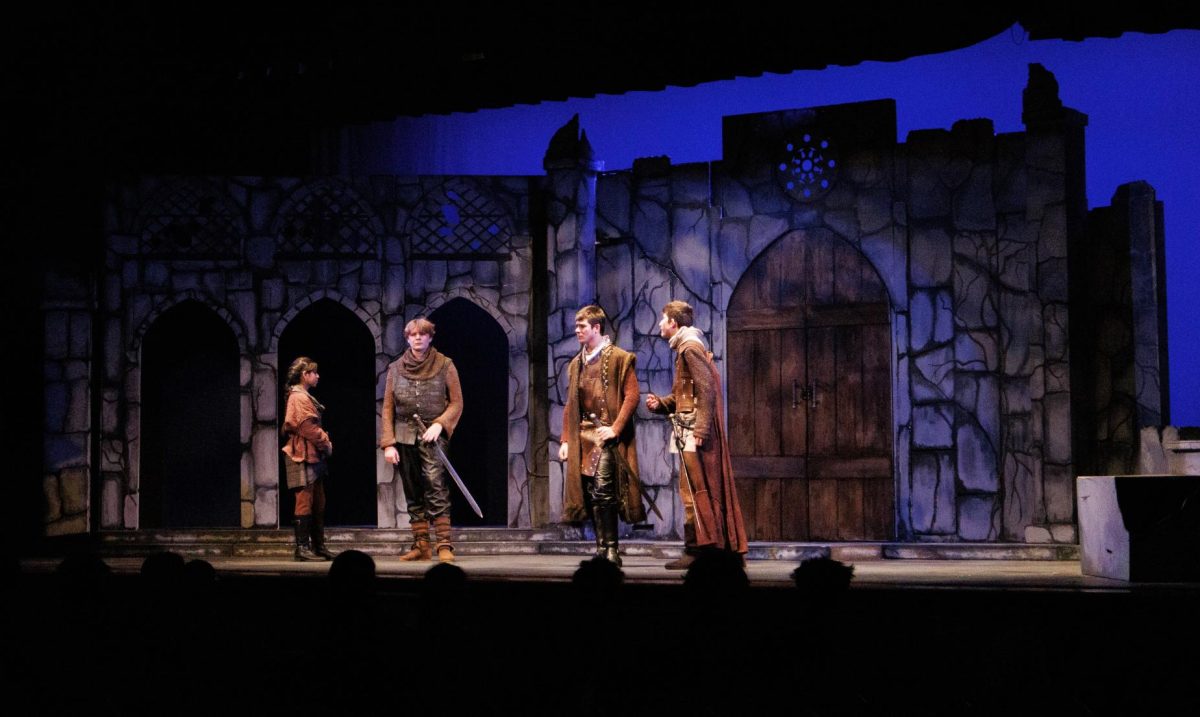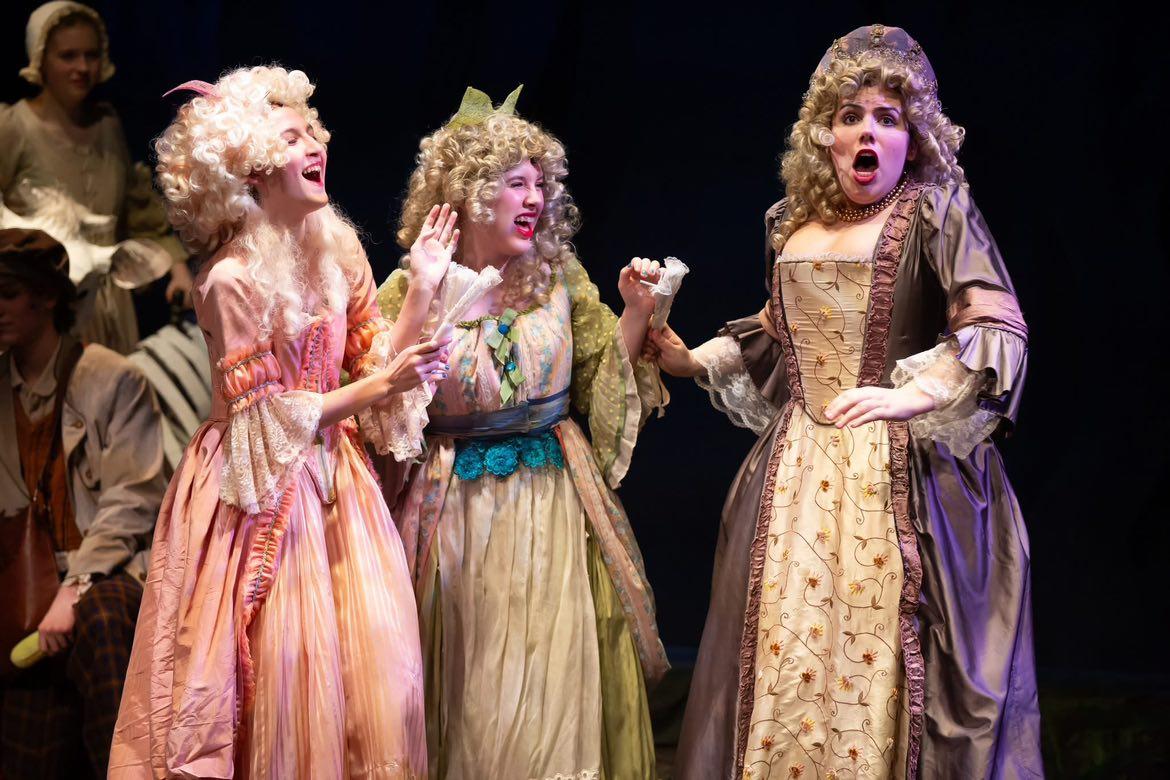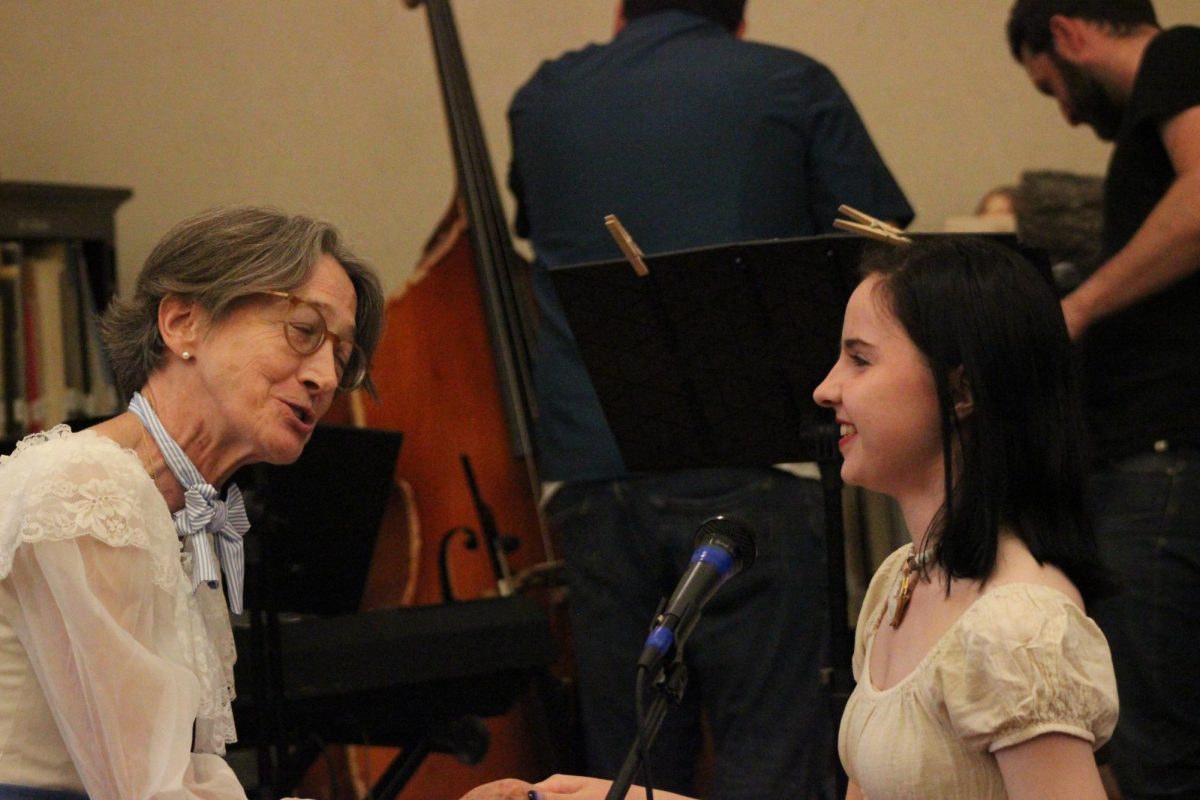Swords clang, blood splatters, and spirits cry on the stage of Haldane’s auditorium.
This winter, Haldane Drama took on one of Shakespeare’s most iconic plays: “The Tragedy of Macbeth.” The show ran from December 6-7. It was a double-cast, with junior Merrick Williams and senior Helen Hutchison playing the lead roles of Macbeth and Lady Macbeth in one cast and junior Lucius Bell and senior Sophie Koch heading up the other.
“Macbeth” is a story of ambition, in which three witches give Macbeth a prophecy that Scotland will crown him king. Macbeth sends a letter to his wife, Lady Macbeth, to inform her of this news, and in return, she encourages and assists in planning the assassination of the king. The two successfully murder the king, and Scotland crowns Mac beth. Macbeth’s paranoia causes him to kill several more individuals who are in his way. However, his deeds don’t go unpunished, and Macbeth is killed in vengeance by the Thane of Fife, Macduff, played in both casts by sophomore Henry Foley-Hedlund.
Director Martha Mechalakos’s interpretation of “Macbeth” transferred the audience into a mythic Celtic world of characters and imagery. From the detailed costume design to the use of lighting and atmosphere, this adaptation of “Macbeth” was breathtaking. Mechalakos added an opening tableau before the first scene, dramatically and tragically displaying those who died on Macbeth’s path to power.
Additionally, Mechalakos chose to include music during transition scenes and made the stage setting elaborate. The music was created by her and her husband, Jim Mechalakos. It was based on pre-Christian Scandinavian folk music and borrowed language from old Germanic dialects. The music came off as unsettling, adding a sinister feeling to the atmosphere of the play. However, the addition of music unified each scene and gave a point of interest to the audience while the stage was dark.
Along with the various choices made by the director, the actors’ interpretations of their characters fully modulated the play. For example, the witches in both casts produced sound effects that not only enhanced the audience’s auditory experience but elevated the eerie ambiance. Representing evil spirits, the “weird sisters” made certain noises, such as clicking, hissing, and growling. This left an interpretational element up to the audience, allowing them to question whether the witches were human or some form of supernatural or extraterrestrial presence. The witches were double cast; Sophomore Maisie Matthews, junior Lucia Petty, and senior Alexandra Cairns performed in one cast, while senior Rain Lee, junior Louise Denehy, and junior Molly Bernstein played the roles in the other. The “Macbeth” scenes featuring these witches were the most ambiguous of the play and were filled with a chilling and ominous feeling.
Shakespeare included points of comedic relief in “Macbeth” to provide relief from the heavy themes of such a dramatic production. Actors like Gemma Sabin accentuated these moments of comedic relief in the Haldane production. Sabin, who plays the role of The Porter, improvised several lines spoken directly to the audience. Sabin explained this acting choice: “Well, this is a very serious play, so, to kind of break that up– especially right after one of the big pivotal moments, after the murder of Duncan–it’s important to relax the audience a bit and break up the tension.” Sabin’s character and acting choices furthered the idea that comedic relief is important in dramas, specifically in this one. The porter drunkenly interacts with the audience, asking them questions and comparing Macbeth’s home to the gates of hell. In this way, the audience has a moment to unwind while staying on theme with the happenings of the play before the next sequence of dark events to come.
Every show at Haldane requires a lot of work in preparation and behind the scenes. The Tech, Costume, and Set Crews display their skills through the lighting, sound, costuming, and set design. Volunteers help paint and build the sets and come in on weekends or during tech week to assemble the set and costumes. Without the help of volunteers, the Haldane plays would not be as remarkable as they are.
While, at times, the purpose and intention of Shakespeare’s plays can confuse audiences due to a lack of viewer comprehension of the narrative, Haldane Drama executes Shakespeare’s works like “Macbeth” in a way that makes them easy to understand. The efforts of the actors, volunteers, and director were clearly illustrated in the final product of “Macbeth.” The detailed set, effects, and costumes offered an imaginative backdrop and an insight into 11th-century Scotland. All the people who worked on the play took time to create a detailed and thorough performance for the audience. The people involved in the production put on a play and told a story.






